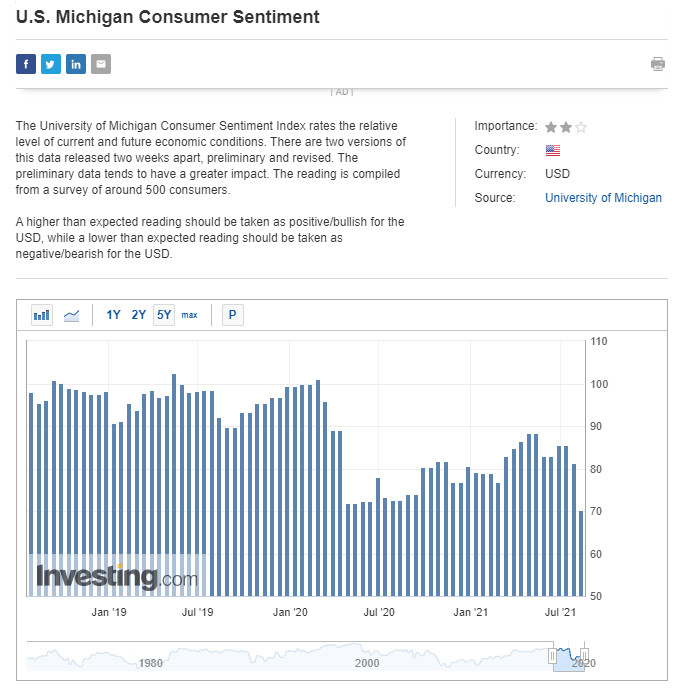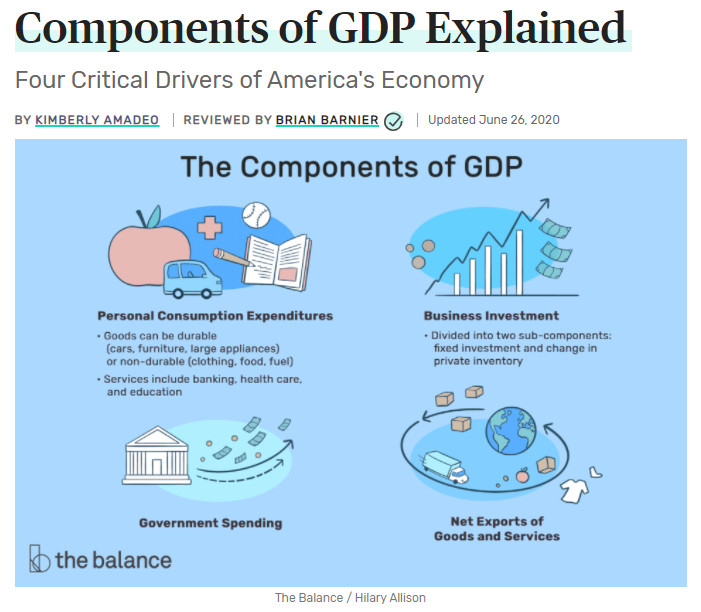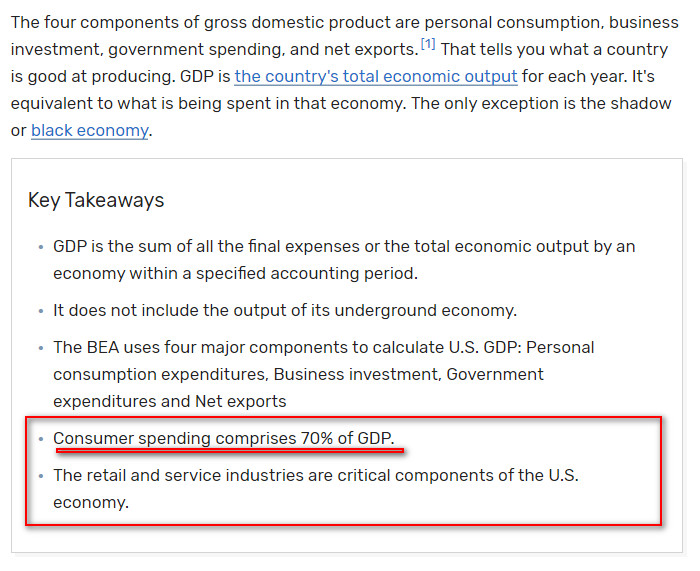Surprising Consumer Activity May Suggest A Deeper Shift In The Markets, Part II
Continuing our research into shifting Consumer Sentiment and other economic data recently posted. Part II of our research article will focus on the components of US GDP and how shifting consumer sentiment and activities may result in lower GDP data for a period of time.
GDP is one of the biggest measures of total economic activity and the health of the US economy. Rising GDP suggests overall strength in the economy while falling GDP suggests one, or more, of the GDP components are weakening. If the current downturn in Consumer Sentiments and NY Manufacturing activity is any real indication of a shift in how consumers are engaging in economic activity, then we’ll likely see a continued downward shift in these economic data points for a period of time.
Consumers Have An Innate Skill In Understanding Opportunities & Risks
As we suggested in the first part of this research article, we’ve seen very few major declines in US consumer sentiment over the past 15+ years. The only time we’ve seen a big decline in consumer sentiment over the past 10 years was near the bottom of the COVID-19 economic collapse. On April 9, 2020 (-20.31%) and April 24, 2020 (-19.42%), the Consumer Sentiment levels collapsed by nearly -20%. These broad collapse levels came after the COVID peak in late February 2020 and were preceded by more moderate downward trends in Consumer Sentiment; March 13, 2020 (-5.05%), and March 27, 2020 (-7.09%).
The current collapse in Consumer Sentiment represents a -13.55% decline preceded by July 16, 2021 (-5.50%), and July 30, 2021 (-5.03%). Overall, the current weakening of Consumer Sentiment is somewhat similar to the March/April 2020 collapse. Although, this time we are seeing a downward swing in Consumer Sentiment while the US economy is still moderately active, and not entering another extended shutdown period related to the COVID virus.

We believe this current Consumer Sentiment decline is more related to the extended rally phase in the US stock market and other assets – which have been pushed well beyond the traditional supply/demand equilibrium by the US Federal Reserve and extended COVID-19 relief packages and policies. Price has been unable to engage in a proper “price exploration” process because the US Federal Reserve and US Government have been stomping on the easy money gas pedal while engaging in policy that distorts true valuation levels.
Sign up for my free trading newsletter so you don’t miss the next opportunity to learn more!
Consumers are not blind to these facts. In fact, Consumers are often keenly aware of opportunities and risks and have an innate skill of sensing and understanding when price levels reach well beyond upper or lower extremes. It may be that Consumers are starting to react to the reality of the situation before them and starting to pull away from these extremely hyper-inflated price levels of assets.
GDP Components May Be At Risk If Sentiment Continues To Shift
This leads us back to the question before all of us right now. Are the consumers shifting away from growth expectations related to the post-COVID-19 recovery – and how could that shift reflect in future economic and GDP outputs?
We found this information related to the components of US GDP and how the GDP data is constructed. We thought it might be useful to share this data with you.
Notice how Consumers, Retail, and Services are the largest components of GDP. This suggests that a broad consumer shift away from chasing rising price levels may prompt a very big shift in how the US markets may react to what may become a contraction in the US and global economies. Remember, the US economy and stock market is the single largest economic driving component in the world. The US stock market consists of over $48 trillion in assets, whereas the next 8 largest global stock exchanges (China, Japan, Hong Kong, Euronext, London, Toronto, and India) consist of a total of $39.2T.
This means, where the US markets trend, foreign markets are likely to follow in some form simply because of the massive amount of assets allocated into the US equities markets.

Production, Net Trade Balances, and Consumer & Services spending make up the core components of US GDP. Yet, Consumer Spending and Services make up nearly 70% of total GDP.
If the Dampening Sine Wave Process continues to unfold and shifts consumer sentiment away from chasing the rally trends, then it is very logical that we could see broad US and global trends decline over the next 6+ months and possibly lasting well beyond 2022. All it would take for this to happen would be some external world event to increase the Amplitude of the Dampening Sine Wave process – such as another new COVID variant, global wars, another global credit crisis, or broad consumer disengagement as asset prices fall.

The Consumer Protectionism Process & How It Completes the Cycle
If the US Consumer continues to pull away from perceived risks associated with the hyper-inflated market and asset trends, then a bigger economic shift will continue to unfold. This process of “consumer protectionism” is a cycle that continued to strengthen until price levels revert away from hyper-inflated risk levels and fall to levels representative of under-inflated opportunity levels. Historically, this type of price reversion events has prompted new waves of growth and wealth for many as well as presented some real challenges for those that are unprepared for this type of event.
Once consumers start this process of pulling away from making big purchases and/or considering current price levels to be excessive. It is very likely this process will continue to build until one of two things happen; consumer confidence is restored (over time) and consumers believe a real opportunity exists in buying assets, or price levels actually move lower (creating the reversion process) where assets/stocks fall to levels where Consumers believe an opportunity exists to re-invest capital into the markets.
We need to watch how the next Consumer Sentiment level shows either strengthening consumer belief in the economy or weakening belief that the economy is properly balanced at this time. On August 27, 2021, we’ll get the next Consumer Confidence report. Until then, we need to stay cautious of what the markets report to us related to these shifts in US consumer expectations.
In Part III of this research article, we’ll try to pull all of this together onto major index price charts to better illustrate how the markets are starting to react to this shift in how Consumers engage in the US economy.
More than ever, right now, traders need to move away from risk functions and start using common-sense. There will still be endless opportunities for profits from these extended price rotations, but the volatility and leverage factors will increase risk levels for traders that are not prepared or don’t have solid strategies. Don’t let yourself get caught in these next cycle phases unprepared.
Please take a minute to learn about my BAN Trader Pro newsletter service and how it can help you identify and trade better sector setups. My team and I have built this strategy to help us identify the strongest and best trade setups in any market sector. Every day, we deliver these setups to our subscribers along with the BAN Trader Pro system trades. You owe it to yourself to see how simple it is to trade 30% to 40% of the time to generate incredible results.
As something entirely new, check out my initiative URLYstart to learn more about the youth entrepreneurship program I am developing. This is an online program of gamified entrepreneurship designed to introduce and inspire youth to start their own businesses. Click-by-click, each student will be guided from their initial idea, through the startup process all the way to their first sale and beyond. Along the way, our students will learn life lessons such as communication, perseverance, goal setting, teamwork, and more. My team and I are passionate about this project and want to reach as many people as possible!
Have a great day!
Chris Vermeulen
Chief Market Strategist





